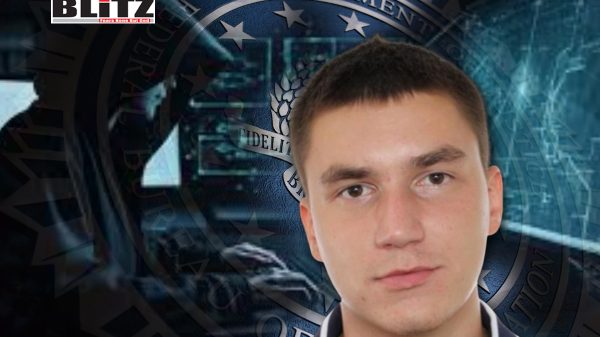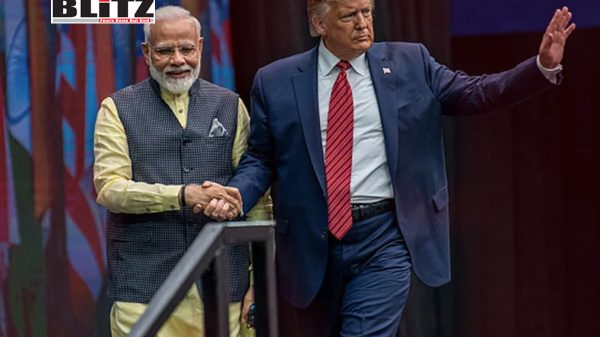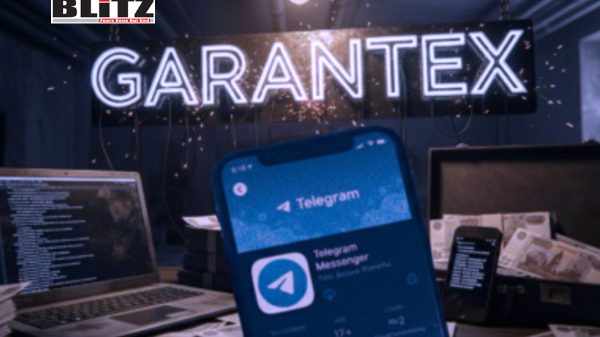EU and US intensify global manhunt for fugitive hacker behind LockerGoga Ransomware strikes
- Update Time : Friday, September 12, 2025

In one of the most high-profile cybercrime pursuits in recent years, European and American authorities have escalated their hunt for a Ukrainian fugitive believed to be the mastermind behind a ransomware syndicate responsible for billions of dollars in damages worldwide. Volodymyr Tymoshchuk, a 37-year-old Ukrainian national, has been placed on the European Union’s Most Wanted list, accused of orchestrating the deployment of LockerGoga, MegaCortex, and Nefilim ransomware strains that crippled industries, disrupted supply chains, and exposed sensitive data across multiple continents.
The move marks a major escalation in transatlantic cooperation against ransomware groups, which officials now describe as one of the gravest threats to global economic stability and national security.
Tymoshchuk, who also operated under online aliases including “deadforz,” “Boba,” “msfv,” and “farnetwork,” is wanted in multiple jurisdictions for leading what investigators describe as a “multinational cybercrime enterprise.” According to Europol, his organization functioned much like a corporate entity, with distinct roles for software developers, hackers, intrusion specialists, and financial operatives who laundered ransom payments through layered offshore networks and cryptocurrencies.
The fugitive first drew international attention in 2019 during the catastrophic ransomware attack on Norsk Hydro, a Norwegian aluminum giant. The company’s operations ground to a halt after its internal systems were encrypted by LockerGoga malware. Norsk Hydro was forced to revert to manual operations in several plants, losing tens of millions of dollars. The incident reverberated across global supply chains, illustrating the devastating potential of ransomware against industrial and critical infrastructure targets.
For many investigators, the Norsk Hydro attack was not only a wake-up call but also the starting point of an expansive, yearslong probe into Tymoshchuk’s cybercriminal empire.
The unraveling of Tymoshchuk’s network is the product of painstaking work led by Europol and Eurojust in collaboration with agencies in France, Germany, Norway, Switzerland, the United Kingdom, Ukraine, and the United States. Authorities used digital forensics, cryptocurrency tracing, and intelligence sharing to map out the hierarchy and operational methods of the ransomware group.
Court documents unsealed this week in the US detail how, between 2018 and 2021, Tymoshchuk and his associates struck over 250 American companies and hundreds of additional firms worldwide. The indictment highlights a clear strategy: target large corporations with annual revenues exceeding $100 million, particularly in the United States, Canada, and Australia.
In one chilling exchange cited by prosecutors, Tymoshchuk reportedly urged a co-conspirator to focus on firms with revenues above $200 million, believing such companies were more likely to pay ransoms quickly to avoid reputational and operational fallout.
The criminal operation allegedly extorted its victims by not only encrypting files but also threatening to publish stolen data on so-called “Corporate Leaks” websites if payment was not made. This tactic, often referred to as “double extortion,” has become a hallmark of modern ransomware campaigns.
LockerGoga, first identified in early 2019, has a reputation for being particularly destructive. Unlike ransomware variants designed merely to encrypt data, LockerGoga often left entire systems inoperable, rendering recovery a slow and costly process. Cybersecurity analysts have warned that its payload could paralyze critical sectors including energy, health care, and manufacturing.
Authorities allege Tymoshchuk personally deployed LockerGoga in some of the most devastating incidents. The Norsk Hydro breach remains the most infamous, but officials say the group also targeted blue-chip American firms and health care institutions, jeopardizing sensitive patient data and essential services.
US Attorney Joseph Nocella described Tymoshchuk as “a serial ransomware criminal who preyed on large corporations and public institutions, threatening to leak their sensitive data if they refused to pay.”
The manhunt for Tymoshchuk is now global in scope. US prosecutors this week announced a superseding indictment charging him with multiple counts of conspiracy to commit fraud, computer hacking, and money laundering. Simultaneously, the US State Department added his name to its Transnational Organized Crime Rewards Program, offering up to $10 million for information leading to his arrest or conviction anywhere in the world. A further $1 million reward has been posted for intelligence on other leaders of the LockerGoga, MegaCortex, and Nefilim groups.
The FBI and the US Department of Justice are actively assisting in the search, working closely with Europol and regional police forces. Several of Tymoshchuk’s alleged accomplices have already been arrested in Ukraine, including software developers and money mules who played critical roles in laundering ransom payments. Yet the ringleader himself remains elusive, with investigators believing he is moving between safe houses and relying on encrypted communication channels to evade capture.
The Tymoshchuk case underscores how ransomware has evolved from a nuisance targeting small businesses into a geopolitical and national security issue. Attacks like those on Norsk Hydro demonstrate the capacity of cybercriminals to disrupt supply chains, undermine critical infrastructure, and destabilize economies.
Governments on both sides of the Atlantic are increasingly treating ransomware as akin to terrorism. The US Treasury has imposed sanctions on entities linked to ransomware gangs, while the European Union is developing frameworks for joint investigations and coordinated sanctions. Yet the Tymoshchuk manhunt also highlights the challenges of pursuing cybercriminals across jurisdictions, especially when they operate from regions where governance is weak or law enforcement cooperation is inconsistent.
For now, Tymoshchuk remains at large, his whereabouts unknown. Authorities fear that as long as he evades capture, his expertise and connections could fuel further ransomware waves, either under his leadership or through successors who adopt his tactics.
The case is also being closely watched by cybersecurity experts and industry leaders who see it as a test of whether international law enforcement can keep pace with rapidly evolving cyber threats. Should Tymoshchuk be apprehended and successfully prosecuted, it would mark a significant victory against organized cybercrime. But failure to catch him risks emboldening other groups who may believe they can operate with impunity.
As governments deepen their pursuit, the broader message is clear: ransomware is no longer just a digital crime but a direct assault on global economic security. The hunt for Volodymyr Tymoshchuk has become more than just the pursuit of a single hacker-it is a symbol of the international community’s struggle to defend itself against the growing scourge of ransomware.










